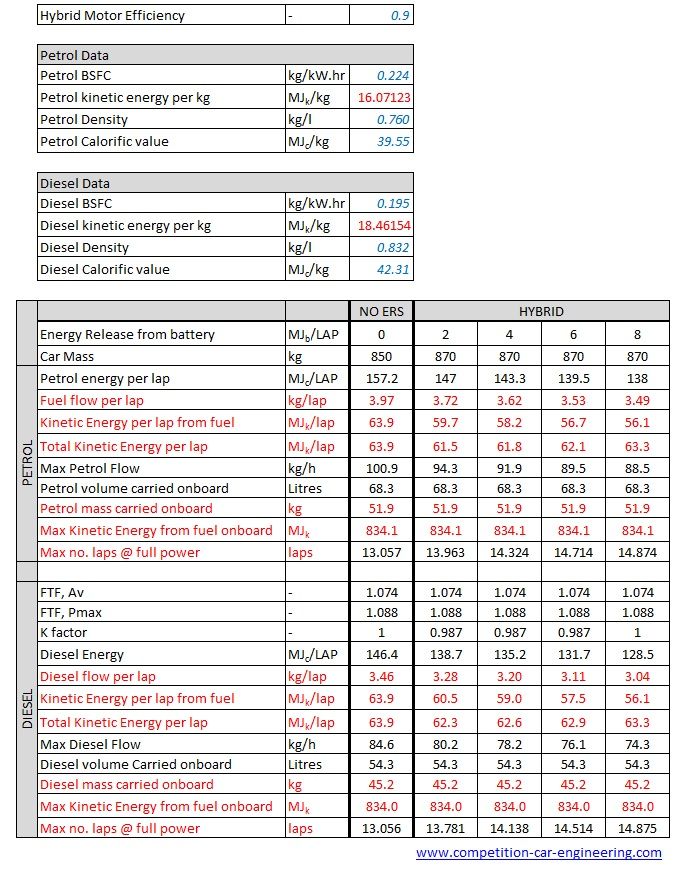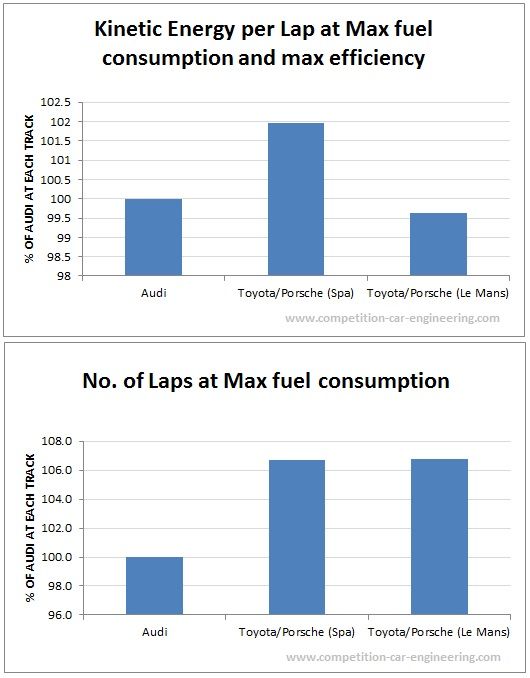Figures in black are directly from the latest FIA Appendix B.
Figure in blue are estimated figures
Figures in red are calculated using the black and blue figures.

Some general observations:-
Using these figures the Kinetic energy per lap and max no. of laps at full power for a non ERS car is the same regardless of whether the main engine is diesel or petrol.
The Kinetic energy per lap and max. no of laps at full power for an 8MJ car is the same regardless of whether the main engine is diesel or petrol.
An 8MJ Hybrid car gets approximately 3% more kinetic energy per lap than a 2MJ car, i.e. (contrary to my previous belief); a bigger Hybrid system car does get a slight advantage in lap time, and not just in stint length compared to a car with a smaller hybrid system.
At a little less than full power an 8MJ car should be able to do 1 more lap (at Le Mans) than a 2MJ car (15 laps vs 14 laps), regardless of whether the main engine is diesel or petrol.
For a 2MJ Diesel to do a 15 lap stint it would need to run at approx. 92% of its maximum allowed fuel flow per lap (i.e. 92% of its maximum allowed average power).




